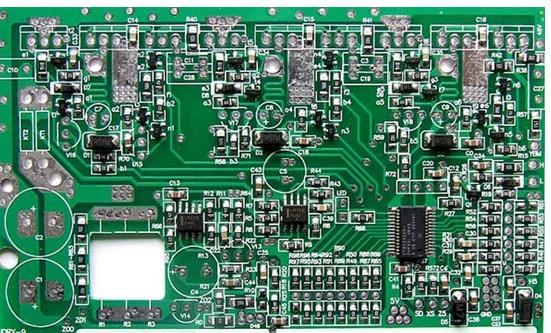The production process of flexible circuit boards is to produce conductor circuit patterns by using photoimaging pattern transfer and etching processes on the surface of a flexible substrate. The surface and inner layers of double-sided and multilayer circuit boards are realized through metallized holes. The inner and outer layers are electrically connected, and the surface of the circuit pattern is protected and insulated by PI and glue layer.
Some step instructions
1. Cut the material
This is a process that every FPC flexible circuit board production must go through. The base material is initially cut. The purpose of this is to reduce excess waste as much as possible. When cutting the material, if the cutting is larger, the excess material will be wasted.
2. Chemical cleaning
This step is mainly to clean the oxide layer on the conductive substrate. If the copper oxide on the copper foil is not cleaned, it will continuously oxidize the circuit board, which is a loss to the actual service life of the FPC circuit board.
3. Inner anti-corrosion dry film (FPC flexible circuit board)
The first step is to make the circuit on the film, and use the exposure machine to expose the circuit on the film on the substrate with the resist dry film (photosensitive film) attached, so that the circuit can be transferred to the copper foil.

4. Acid etching (FPC soft circuit etching)
When using chemical etching, it is easy to use acidic acid such as hydrochloric acid or sulfuric acid for FPC soft boards, but it is easy to use ammonia water when etching hard circuits.
5. Chemical cleaning
This step is to prevent the remaining solution from etching in the circuit, and then use plasma to clean the foreign matter on the FPC circuit board.
6. Alignment of the inner cover film
Before this step, the shape of the cover film of the soft board should be made and formed, and then the cover film and the FPC circuit board should be aligned and the soldering iron should be used for preliminary fixing on the pad.
7. Pressing
The pressing is divided into fast pressing and slow pressing. For this kind of production process that has to go through multiple pressings, the first pressing is to use a fast pressing machine. At this time, the maximum allowable thickness after pressing will be standardized in the data. clear. After pressing, check whether there are pressing bubbles, glue overflow and other problems.
8. Bake
This step is to fully bond the circuit board and the glue. The glue used between the copper foil and the cover film will flow and spread after high-temperature baking, which will make the bonding more complete.
9. Print characters on the FPC circuit board
It is also necessary to make the characters on the film on the screen, and use the screen to print the characters on the FPC circuit board. Check whether the characters are missing or underprinted.
10. Final inspection
This is a process that all FPC circuit boards must carry out. This is the last guarantee for the inspection of flexible circuit boards in the production workshop.